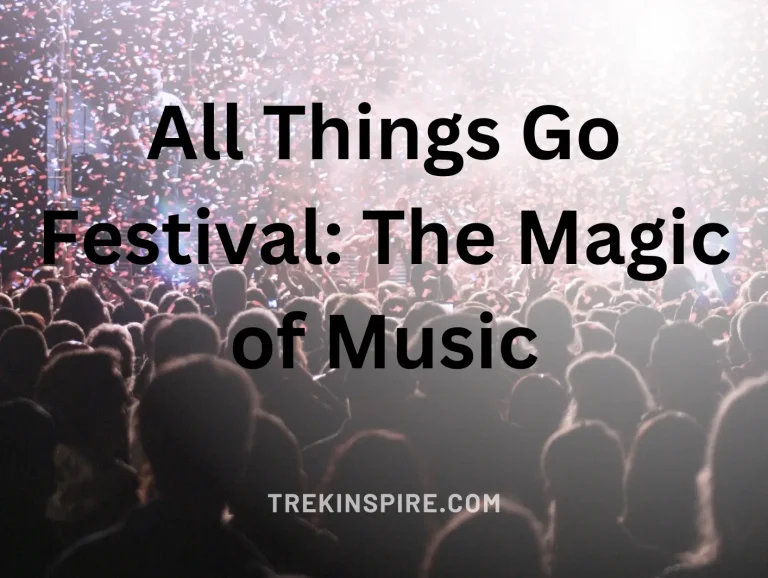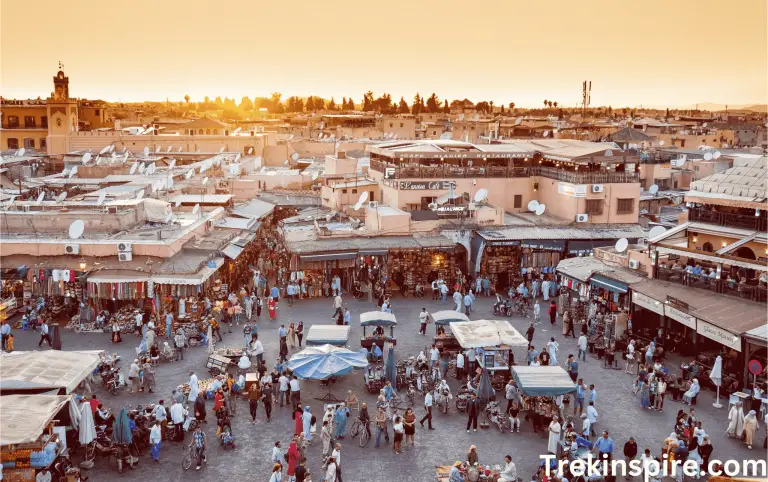Tacos y Tamales Festival Guide to Location, Guests, and Ticket info

Festivals bring people together, and few events do it better than the tacos y tamales festival in Chicago. At the heart of this celebration is a showcase of food, music, and cultural pride. Just like the Passages Malibu Logo: A Symbol of Healing and Recovery represents more than a design, this event represents far more than tacos and tamales. It is a story of tradition, unity, and community spirit that continues to grow every year.
What Type of Festival Is It?
The tacos y tamales festival is a Latin and Hispanic cultural festival. It takes place in the vibrant Pilsen neighborhood of Chicago. The event draws inspiration from the traditional Tianguis, which is a lively open-air street market seen across Latin America. Visitors experience authentic Mexican and Latin food, art, and live entertainment that reflect the community’s heritage.
This festival is more than food. It is a cultural journey where traditions are preserved and celebrated through music, dance, and local art. Families, friends, and travelers gather to taste authentic dishes, learn about traditions, and enjoy music that ranges from mariachi to contemporary Latin beats.
Location of the Festival
The festival takes place in Pilsen, Chicago, a neighborhood famous for its deep Mexican-American roots and artistic culture. Specifically, the event is set on Blue Island Avenue between Ashland Avenue and Wolcott Avenue. This location is central, easy to access, and deeply connected to Chicago’s Latino heritage.
Pilsen itself is known for its murals, galleries, and rich cultural influence, making it the perfect backdrop for the festival. The streets transform into a colorful and flavorful space that feels like a marketplace from Mexico. Visitors often feel transported as they explore rows of vendors offering food, crafts, and souvenirs.
Who Organizes This Festival?
The tacos y tamales festival is organized by Special Events Management, one of Chicago’s largest producers of cultural and food festivals. Their expertise ensures that the event runs smoothly and delivers a genuine community experience.
What makes this festival unique is that a portion of proceeds supports local community organizations in Pilsen. It is not only about fun but also about giving back. The organizers partner with local vendors, artists, and performers to ensure authenticity and cultural respect.
Dates and Times of the Festival
The tacos y tamales festival is held every summer in July, making it a highlight of Chicago’s summer calendar. It spans three days and follows a fixed schedule:
| Day | Time | Activities Highlights |
|---|---|---|
| Friday | 5 PM – 10 PM | Opening music, food stalls, evening concerts |
| Saturday | 12 PM – 10 PM | Full day of performances, family fun, and food markets |
| Sunday | 12 PM – 10 PM | Cultural showcases, closing events, and late-night food fun |
The timing allows both families and late-night festival-goers to enjoy. Parents with children can attend during the day, while music lovers enjoy nighttime shows under the stars.
Where to Buy Tickets?
Entry to the tacos y tamales festival is free, which makes it accessible to everyone. However, there is usually a suggested donation at the gate. This donation goes toward supporting local organizations and helps keep the festival running year after year.
Food and drinks inside the event are sold by vendors, so visitors should bring cash or cards for purchases. While entry is free, donations ensure the festival continues to grow and benefit the community.
Re-entry is allowed, so guests can leave and return at any time. This flexibility makes it easy for families and groups to enjoy the festival at their own pace.
Performers at Tacos y Tamales Festival
Music and entertainment are major highlights of the tacos y tamales festival. The festival features a mix of live bands, DJs, folkloric dancers, and mariachi groups. Each stage celebrates a different aspect of Latin music, from traditional rhythms to modern fusion styles.
Performances often include:
- Mariachi groups delivering classic songs that bring Mexican culture to life.
- Salsa and cumbia bands that keep people dancing throughout the evening.
- Local Chicago Latino performers showcasing their unique talents.
- Folkloric dance troupes representing traditions from Mexico and beyond.
These performances make the festival more than a food fair. They turn it into a cultural showcase where visitors feel the rhythm of Latin America.
Food at the Festival
Food is at the center of the tacos y tamales festival. Dozens of vendors line the streets, each offering authentic dishes from across Latin America. Tacos and tamales are the stars, but the menus include far more.
| Food Item | Origin | Why It’s Popular |
|---|---|---|
| Tacos | Mexico | Versatile, flavorful, and customizable |
| Tamales | Latin America | Steamed corn masa filled with meats or vegetables |
| Elotes | Mexico | Grilled corn with cheese, chili, and lime |
| Churros | Spain/Mexico | Sweet fried dough with sugar and cinnamon |
| Aguas Frescas | Mexico | Refreshing fruit-based drinks |
The food reflects both tradition and creativity. Many vendors bring family recipes passed down through generations, ensuring authentic taste.
Cultural Importance of the Festival
The tacos y tamales festival goes beyond food and entertainment. It is a space where culture, identity, and history meet. For Chicago’s Latino community, the festival is a chance to share traditions with new generations and welcome visitors into their heritage.
Cultural representation matters, and this festival highlights how food and music connect people across backgrounds. It encourages dialogue, appreciation, and respect while keeping traditions alive in a fast-changing world.
Community Support and Impact
A key feature of the tacos y tamales festival is its focus on giving back. The suggested donations collected at the gate support Pilsen-based organizations. These organizations provide resources and programs that benefit families, students, and community initiatives.
This charitable aspect makes the event meaningful. Visitors know that their enjoyment contributes to local development. It turns a day of fun into an act of support for the neighborhood.
Visitor Experience and Atmosphere
Walking into the festival feels like entering a Latin marketplace. Bright colors, the smell of food, and live music create an atmosphere that feels alive. The festival is family-friendly, with kids enjoying sweet treats and entertainment alongside adults.
The re-entry system makes it flexible, while food and cultural diversity make it exciting. Visitors often return year after year, making it a tradition of their own.
Accessibility and Travel Tips
The festival is located in an accessible part of Pilsen, making it easy to reach by public transportation, bike, or car. Streets are closed during the event, so planning ahead is advised.
Tips for visitors include arriving early to avoid long lines, carrying cash for food stalls, and wearing comfortable shoes. With extended hours, guests can enjoy the festival at their own pace.
Events like this thrive with online coverage. Platforms such as Blogsternation .com Provides Tool for Creating and Managing Blogs help festival-goers share their experiences and guide future visitors. Online communities keep the festival’s spirit alive long after it ends.
Why You Should Visit the Festival
The tacos y tamales festival is not just another Chicago food event. It is a cultural journey, a family outing, and a community gathering. Visitors discover authentic food, vibrant music, and a strong sense of belonging.
Each summer, thousands join to celebrate Latin culture. Whether you are from Chicago or visiting from another city, the festival is worth adding to your list.
Conclusion
The tacos y tamales festival represents everything that makes community events powerful. It blends food, music, tradition, and social responsibility in one lively weekend. Set in Pilsen, it continues to grow as one of Chicago’s most anticipated summer events.
With free entry, authentic food, and diverse performances, it offers something for everyone. Beyond fun, it strengthens communities and supports local organizations. That combination makes it not just a festival, but a cultural treasure.






